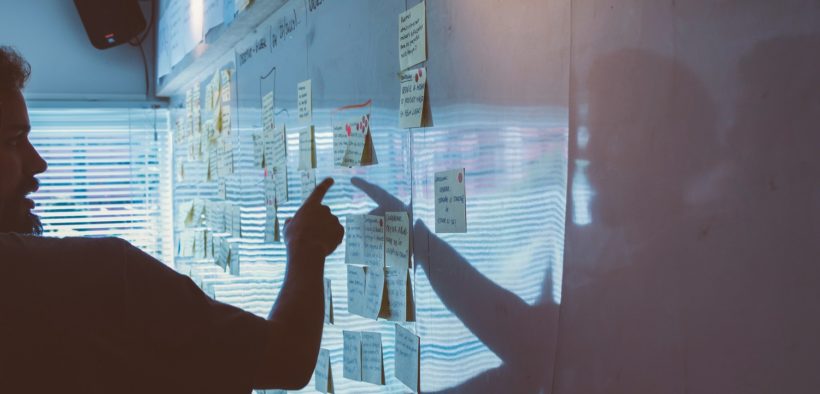In supply chain, your people are your driving force towards success.
People are a dichotomy, both wonderfully simple and frustratingly complex at the same time, and any attempt to frame an individual or group as one thing or another does us all disservice. However, heuristics, or rules of thumb are a handy way for us to approach a topic. We can then take that learning a human touch to the person and the situation when doing anything in the ‘real world’.
This is how I want to look at the subject of people and change in the supply chain.
People Breathe Life into your Supply Chain
Supply Chains are not a ‘thing’, they take people to breathe life into them, to make them function, to make all the parts move and if needed to respond to situations and resolve issues.
As a generalisation, but gives a context to look at situations within the workplace, but I’ve always found people can be categorised in tow ways in Supply Chain, Process Operators, those people who follow the rules and will work to the process as given to them and Disruptors (change agents), those that are looking to improve performance and productivity and who are looking to get more for less. You need both. Your disruptor will develop, facilitate and improve processes, but will have little interest in being tied to them long term. Your process operator will be great at following a procedure developed and implemented for them but may be hesitant to offer improvements.
Have you ever given one of your people a task and even though they know how to do the job inside out, they don’t run with any improvement initiatives that you’ve tasked them to do, and conversely do you have someone that is always fiddling and playing with something, never giving it time to stabilise?
I reemphasise, people aren’t black and white, and that each individual will exist somewhere on that scale, however it is worth bearing this in mind if results are not playing out the way you’d expected or even agreed.
A good way to find out where your natural inclinations are would be to do something like a Kolbe, which focuses on the things we do instinctively whereas a Myers Briggs Indicator, which a lot of people are familiar with tend to be contextual, i.e. we behave differently in different situations.
Your People, Disruptors or Innovators?
“Whether You Think You Can, or Think You Can’t … You’re Right” – Henry Ford
When I’ve been working on improvement projects, I’ve found the best place is always to get down on the floor and start talking to people. The team that are tasked with carrying out to job day-to-day will be the first ones to tell you what’s wrong and where the friction points are in a process. Within that group there will also be team members that will tell that any changes you want to make won’t work and that we’ve always done it this way.
I’ve had to learn to find balance when dealing with these situations, knowing your ground and being clear in your outcomes, but not tied to how you get there has been helpful. Learning different styles of communication for sharing ideas that land with different people is an ongoing journey for me.
Moving Forward
“In preparing for battle I have always found that plans are useless, but planning is indispensable.” ~ Dwight D. Eisenhower – Supreme Allied Commander for D-Day, 34th President of the United States
Planning enables gives us the opportunity figure out what we want and map out how we’re going to get there. Identify resources and risks and plot the course.
When explain change always use Microsoft Windows as an example. Back when I started playing with computers, we had Windows 3.1, right now we now have Windows 10. Each version has built on the capabilities, mistakes and lessons learned from the previous versions, they’ve also taken ideas from rivals, learned from mistakes and consumer feedback. They have also built on new technical capabilities, memory, CPU power and speed and ideas and concepts about how to do things better. From this we can learn to:
- Make smaller more achievable targets
- Gradual improvement (no operating system is ever released without bugs that needed patches)
- As our knowledge and skill improve (capability) we can do more.
- Don’t be afraid to look outside of your circle (department, or business) for the answers and knowledge that you seek, then bring it back and apply it through the lens of how your business functions
- Again this is a rule of thumb, but there are two types of projects. Ones where we’ve done it before and got the result. The situation may be a little different, but we know the steps, the sequence and how it is likely to turn out. In this case we can develop a plan and have a level of confidence that we should get the result we expect. But if the outcome that we’re trying to achieve is something we haven’t done before; we get a few choices:
- Google ‘how to’, then start doing and figure things out as we go
- Attend courses, gain new skills and then apply those
- Hire someone who knows ‘how to’
When creating something new we have an idea about what we want, and maybe we know a few of the steps we’ll need to take, but there will also be a lot of learning along the way. In these cases, we should be prepared to be more flexible in our approach and timeline as it may well change once we get into the task of ‘doing’.
Too often people will defend their plan because it is theirs, they developed it and they’re tied to it emotionally. Detachment will serve you well here (unless time is of the essence and you know what you are saying will work through experience). Not dying at the altar of your plan simply because you came up to it is a first step, and just like the evolution of Windows you might have to break your plan into bite sized chunks, modify sequences and timelines as you learn along the way.
For me, the big takeaway from the ‘Wine Down’ discussion was a reminder that everyone is different. There is no single way of communicating that will land with everyone. Just as unique are the different attributes people bring to a team, whether it’s the ability to execute a process or take that same process and improve or implement something new. Change in supply chain takes many forms and as the group discussed, there is more than one way to approach it, but for me, the most important aspect will always be the people because without them, not much will change.
























































Follow us on social media